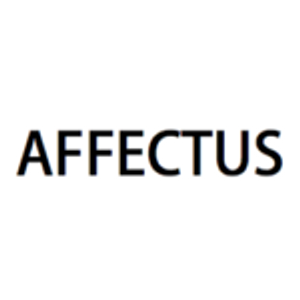Daisuke Tanaka, the designer of tanakadaisuke, can turn a dainty bejeweled embroidery or lace into a dynamically beautiful jacket and skirt. He invites us into a bittersweet world that seems familiar but doesn’t exist.
While Tanaka designs collections for his own brand as a fashion designer, he also creates costumes for artists as an embroidery artist. Rather than pouring his energy into building a wholesale brand, he mainly designs made-to-order clothes through e-commerce. His work and business ethos are unique; this is made possible thanks to each item from his brand having the immense power of allure. How are his clothes, which capture the hearts of fans and artists alike, born? This interview, which traces his source of creativity, starts with a vital piece of inspiration: anime.

Daisuke Tanaka
Daisuke Tanaka was born in Osaka in 1992. After graduating from the Knitwear Course in the Fashion Creator Department at the Osaka Institute of Fashion in 2015, he worked at a high fashion brand. After leaving the company, Tanaka formally started his brand, tanakadaisuke, in 2021. Aside from designing for his brand’s collections, he also creates costumes for artists as an embroidery artist. Many of Tanaka’s products incorporate intricate embroidery, have picturesque elegance, and provide a magical experience.
https://tanakadaisuke.jp
Instagram:@daisuketanaka18 / @tanakadaisuke_official
Anime, embroidery, and costume-making
——I heard that you watched a lot of anime growing up. Which anime do you still remember watching?
Daisuke Tanaka(Tanaka): I used to watch Sailor Moon, Magica Doremi, and Full Moon wo Sagashite. I was born in 1992 and watched anime “for girls” with my older sister.
——What was it about those series that you liked?
Tanaka: It was imprinted in my mind that girls save the world; I believed they were strong. I also loved Cardcaptor Sakura. It’s about Sakura-chan (the protagonist, Sakura Kinomoto) saving the world. She has a friend, Tomoyo-chan (Tomoyo Daidouji), who makes outfits for Sakura-chan; the story progresses with the two’s collaboration. I wanted to be Tomoyo-chan.
——So, Cardcaptor Sakura is also about girls saving the world. Did you take an interest in the character’s clothes?
Tanaka: In Cardcaptor Sakura, the clothes were different in each episode, which was exciting. She also had her ultimate form, where she would wear an outfit that was a step up from her usual. I couldn’t help but pay attention to that.
——Is there an anime series you like at the moment?
Tanaka: There’s an anime called Land of the Lustrous, which is about anthropomorphized jewels, and the story and illustration are beautiful.
——That anime features anthropomorphized diamonds and sapphires; I feel like your collections have a similar vibe. Does anime serve as a significant source of inspiration for you?
Tanaka: I think so.
——Before you fully launched your brand, your masks with embroidered cherries, which you posted online, were very popular. What was the catalyst for you to make them?
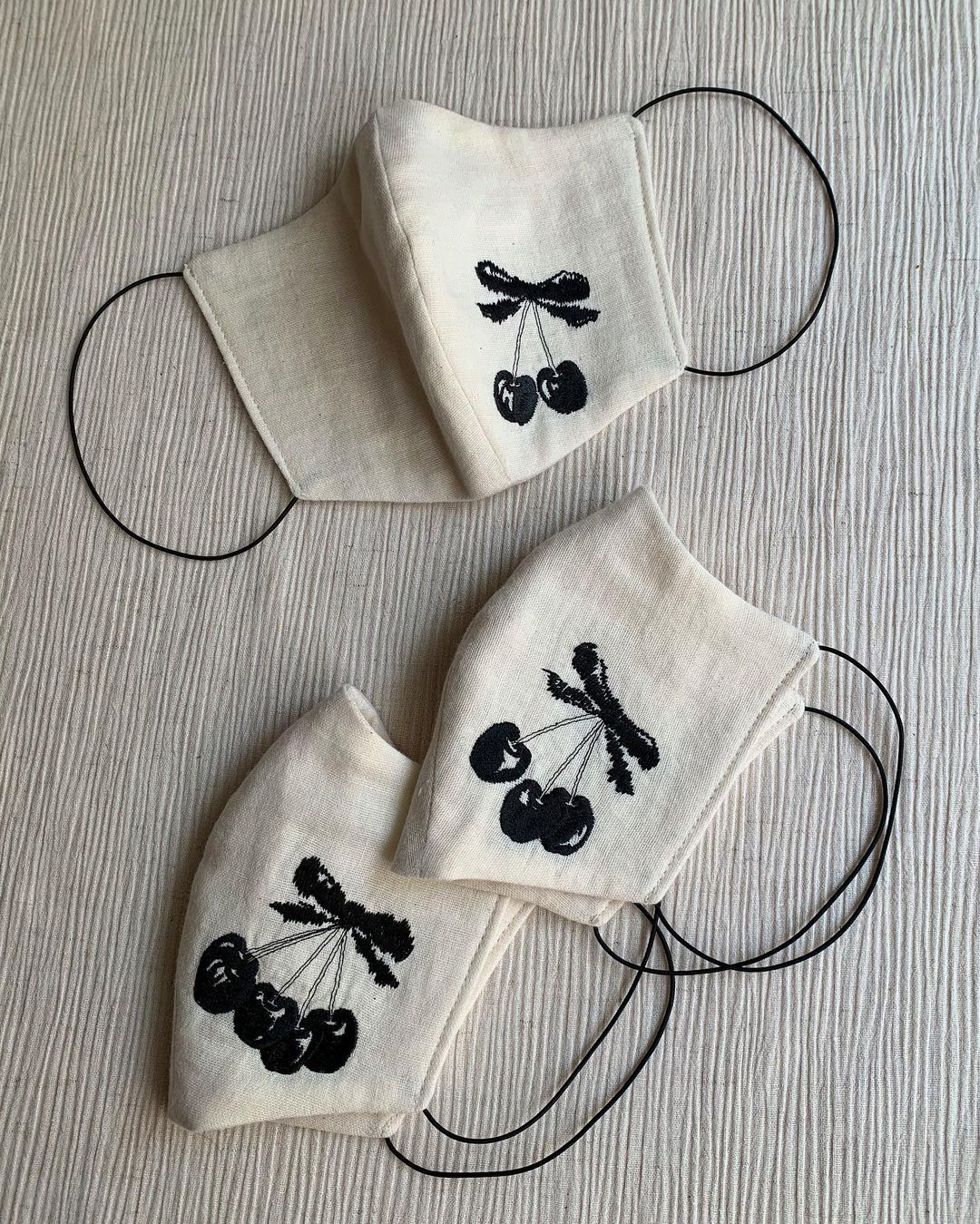
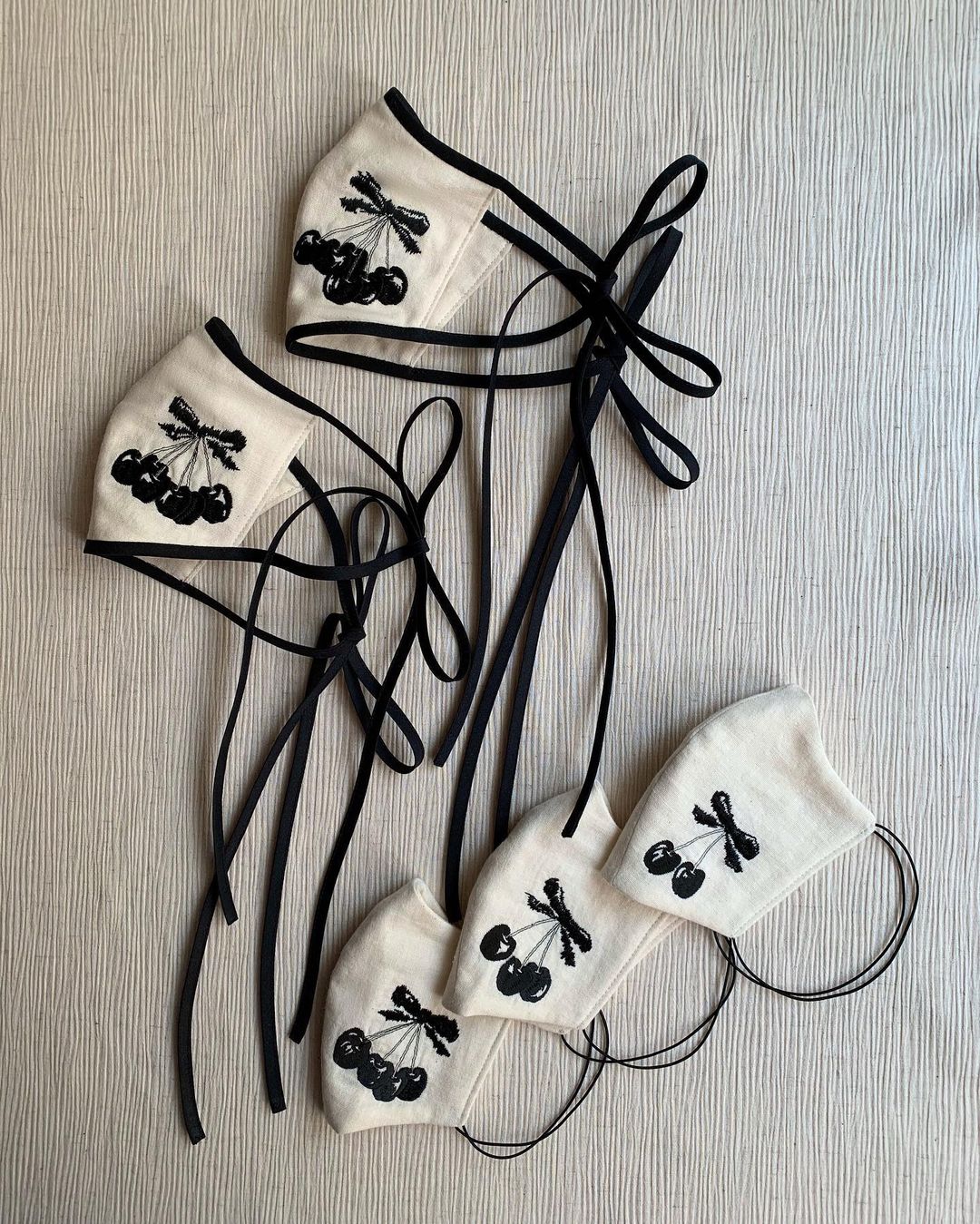
Cherry-embroidered masks that Tanaka made (from Daisuke Tanaka’s Instagram)
Tanaka: I had already designed the cherry embroidery before I made the masks, so I had a lot of leftover cherry-embroidered gauze fabric. Covid hit right around then, and it was the norm to wear masks made out of gauze, so I tried making some and—
——they gained a lot of attention. Where did you learn how to do embroidery? Did you teach yourself?
Tanaka: At fashion school, everyone wanted to master different things, so I had to do embroidery myself. I could get advice, but I used to look at books featuring close-up embroidery details and tried to imitate what I saw using my hands. I’d think, “What would that look like if I did it?” I’d have realizations like, “I can do this much!” or “I can’t embroider at this level on my own.” I gradually embroidered things to my taste.
——Aside from designing your own collections, you also make costumes for artists. Is there a difference in your approach to the two?
Tanaka: When I work for an artist, although I go back and forth with the artist at times, I often communicate with their stylist. I make sure to consider the stylist’s preference. What the artist likes is important, of course, but I come up with embroidery and designs by being conscious of the point of view the stylist wants to convey.
——Let’s say you suggested a costume idea for an artist, and it doesn’t get used. What would you do with that design?
Tanaka: If I suggested five designs to the stylist, only one would be used. The other four would become futile. But I’d have a design I like out of the four, so I’d use that as a reference and put more of a personal twist on it for a tanakadaisuke collection.
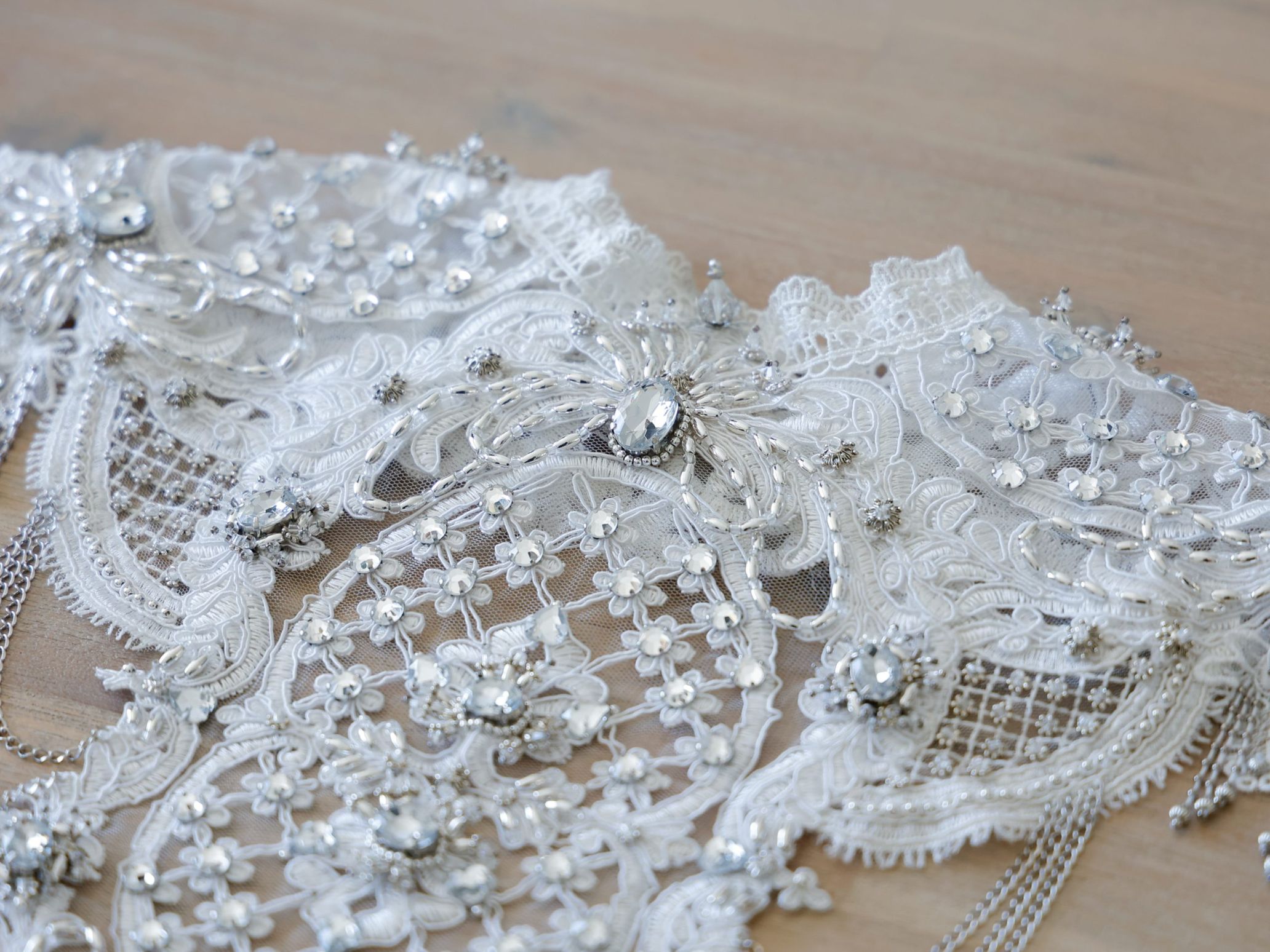
Clothes that allow each person to tell their story
——What is the theme of your Spring/Summer 2023 collection?
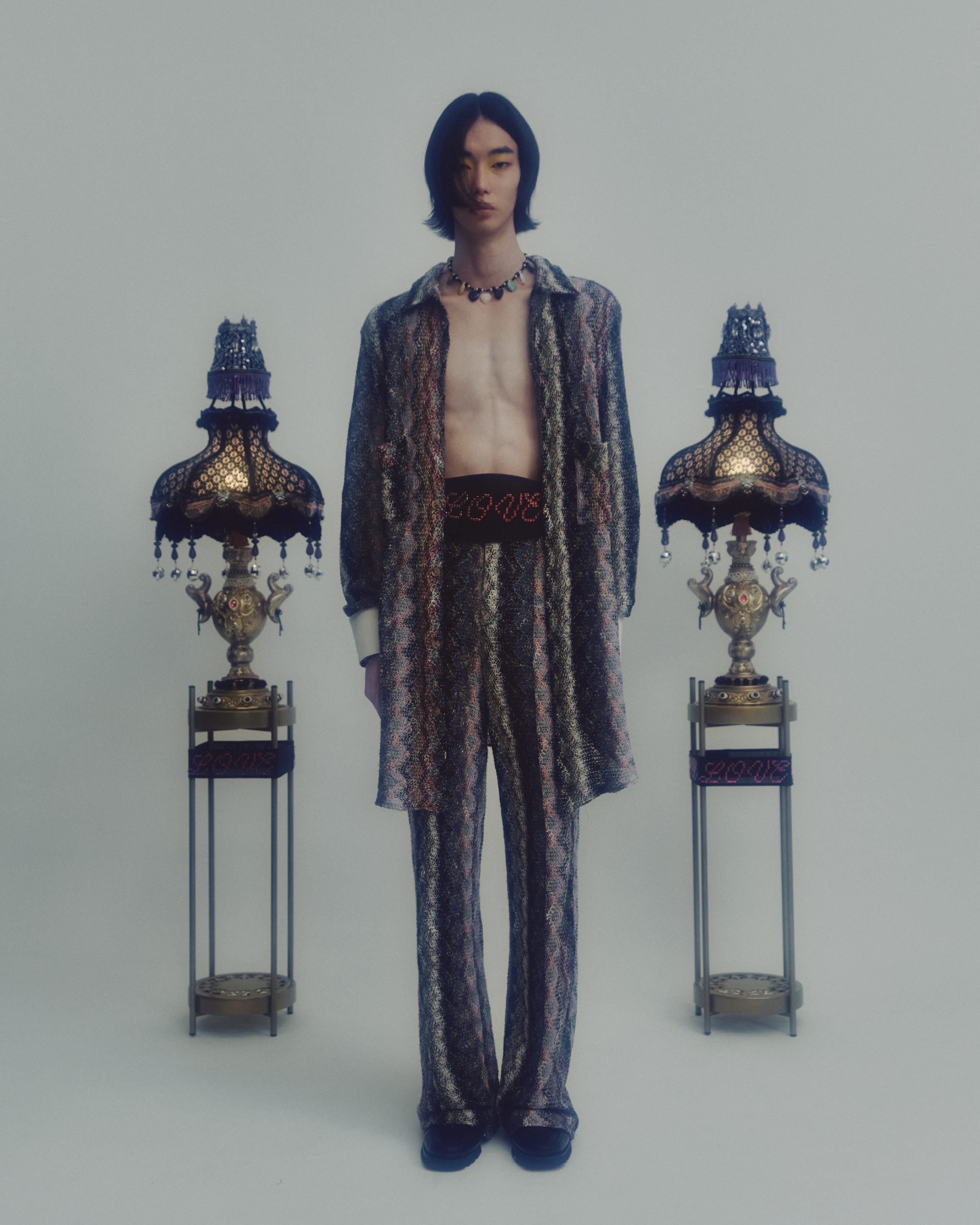
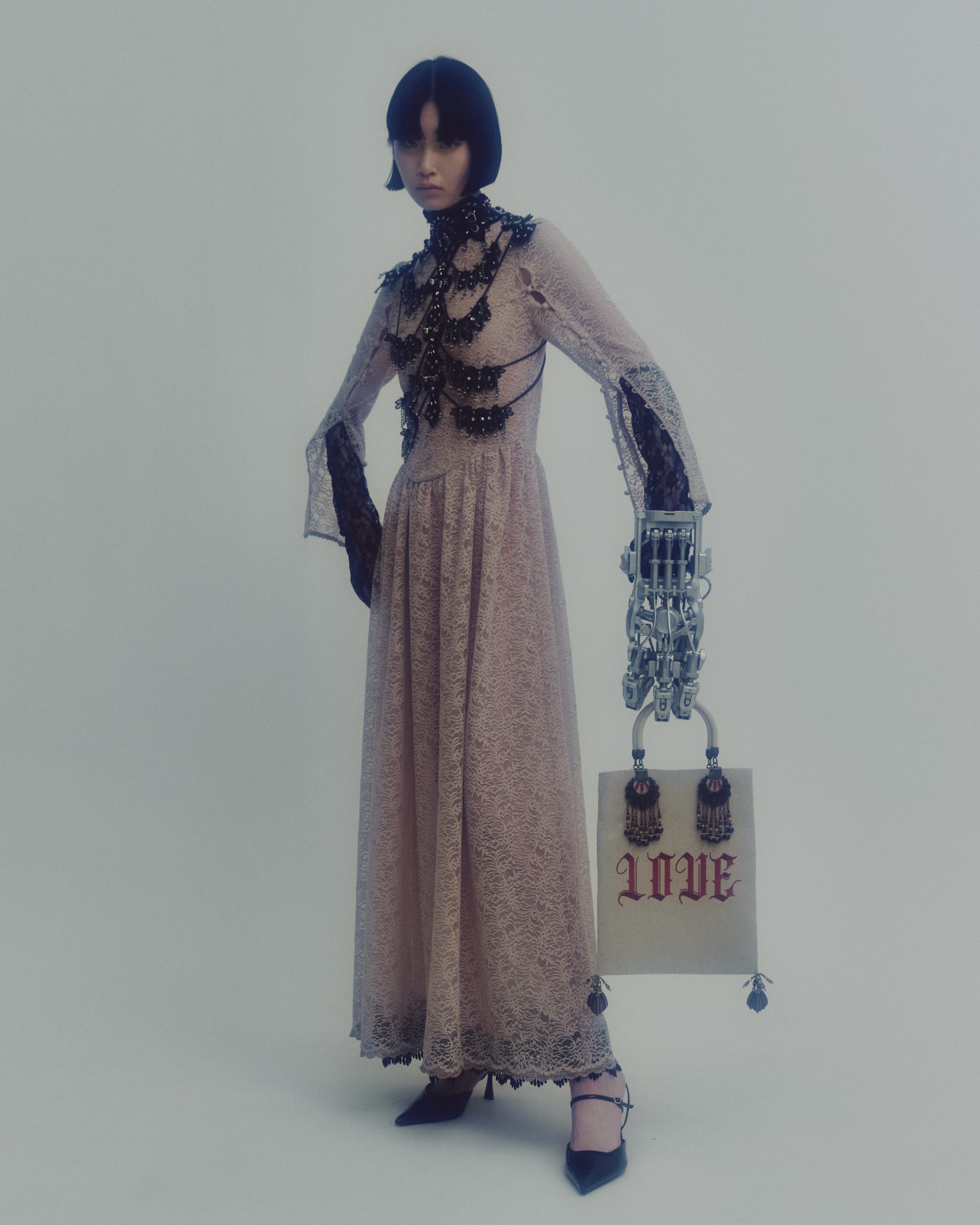

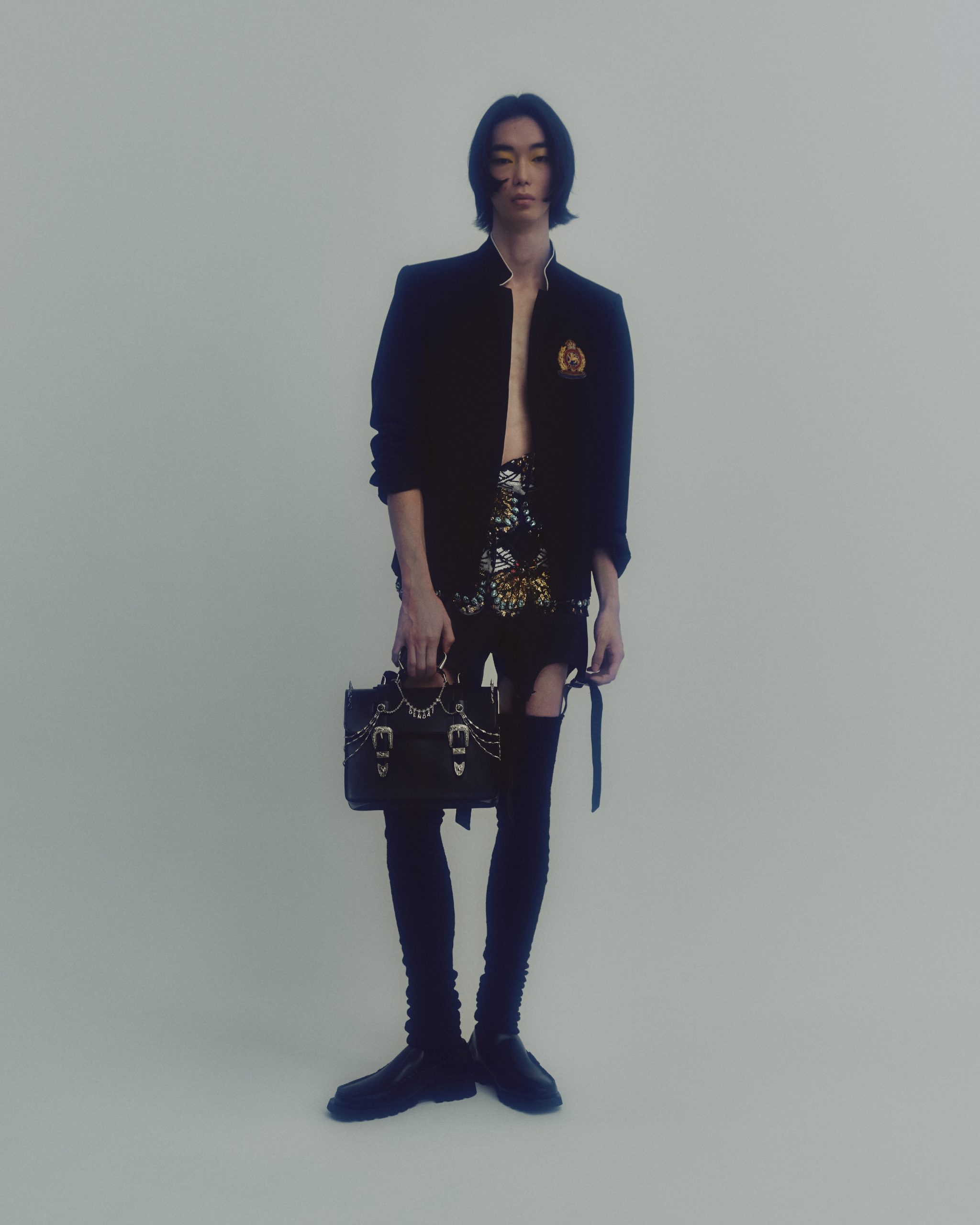
“Sharp Bright Darkness,” tanakadaisuke’s Spring/Summer 2023 collection
Tanaka: When I was a student, I had waist-long hair. I kept my long hair once I started fashion school, but my teacher told me, “You won’t be able to work for a brand in Tokyo if you don’t change. What are you going to do?” During that time, I had a crisis about whether I wanted to present myself in a masculine or feminine way.
For this collection, I tried to express what I needed then; “If something like this existed, I might’ve pursued that,” “If I kept my hair long, I might’ve had another calling in life.”
——Do you mean you wanted to create a world for another version of you that might’ve existed?
Tanaka: I hope this creation could be the catalyst for that. Say, if someone had styled their uniform like my Spring/Summer 2023 collection, I think I would’ve felt like this life was a bit bigger than myself.
——The shade enamel bijou skirt has a vintage, romantic feel reminiscent of dancers in old European paintings. What’s the story behind this skirt?
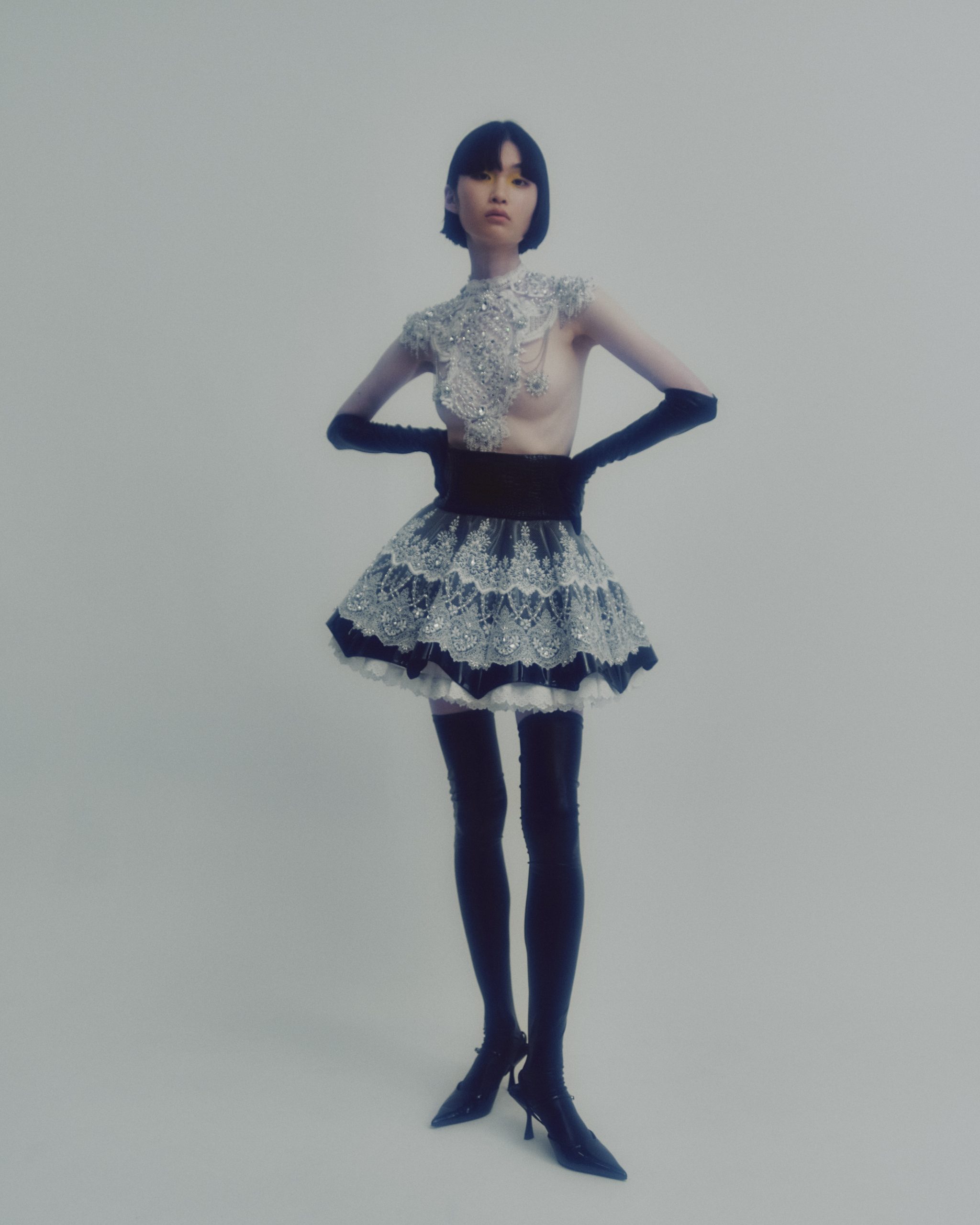
“Sharp Bright Darkness,” tanakadaisuke’s Spring/Summer 2023 collection
Tanaka: I first got the idea to make a skirt shaped like a lampshade. Also, I used to read a magazine called KERA quite often as a student because of my older sister. So, I liked lolita fashion. I wanted the skirt to hint at that, so I chose this shape. But I didn’t want it to feel too saccharine, so I topped it off with leather gloves and black socks. Plus, I wanted to challenge myself on something.
——What was the challenge?
Tanaka: Today, it’s hard to present men and women in clothes with a lot of skin showing. I wanted to see what people were willing to accept with my brand. If a brand like Alexander McQueen did it, people would accept it as art, but some people would get angry if a Japanese brand did it. I wanted to see how far I’d be allowed to go, so I tried doing that.
——Another image that stood out: a model has one hand in a lace glove and the other in a lace glove and a robotic hand. It was rare to see something mechanical in your brand. What’s the intention behind this image?
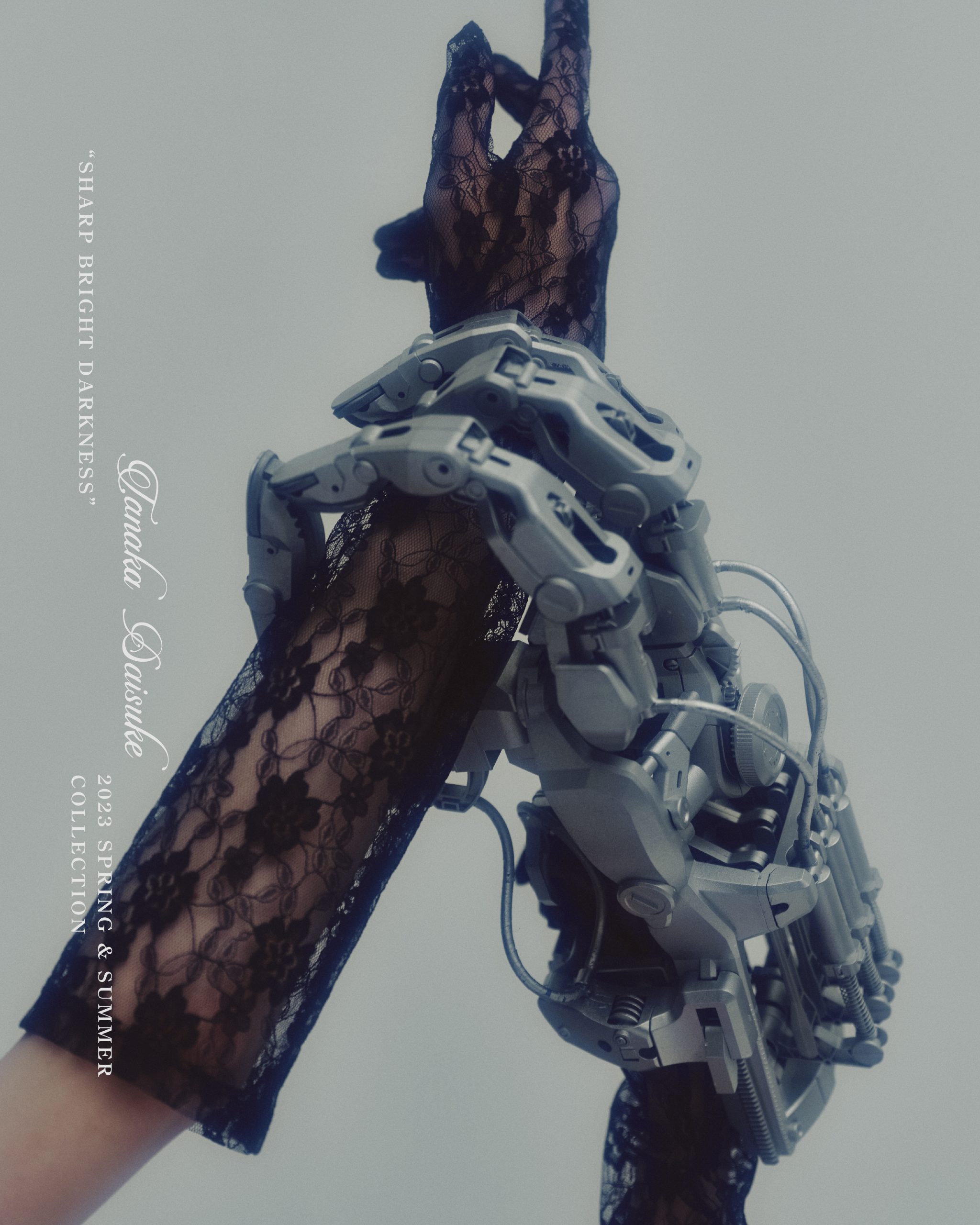
“Sharp Bright Darkness,” tanakadaisuke’s Spring/Summer 2023 collection
Tanaka: I like girly vibes and the mood of machines and wires. At the time, those elements were interwoven in my mind, so I combined them in an easy-to-understand way.
——The look with knitted sleeves doesn’t have any embroidery, which is your brand’s signature, and it makes me think of words like armor, strong, and cool. It has a newness that’s different from your brand’s image in the past.
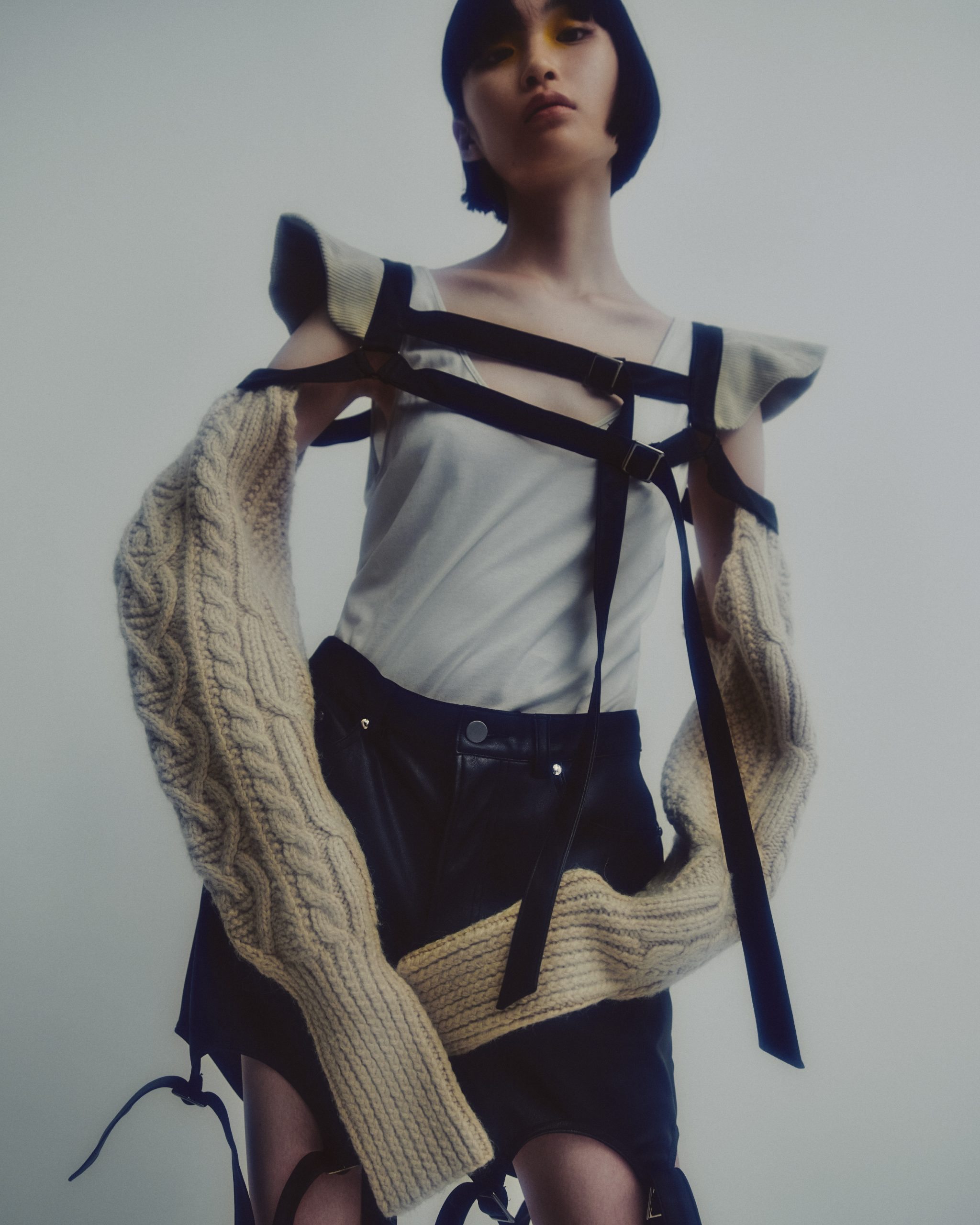
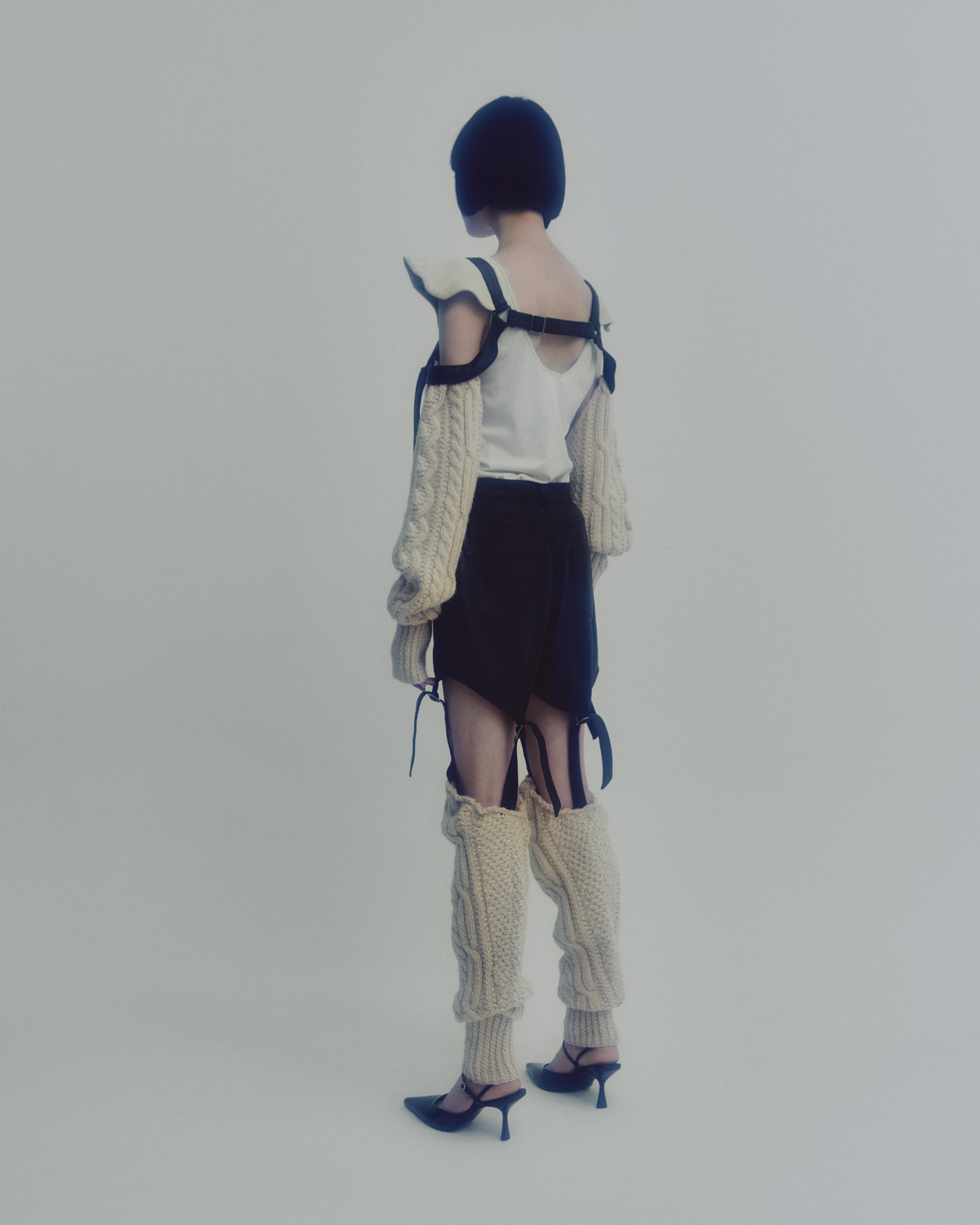
“Sharp Bright Darkness,” tanakadaisuke’s Spring/Summer 2023 collection
Tanaka: I tried to give it a sweet yet strong feel. It’s like you’re customizing yourself; you can feel good about yourself by combining the items. The short leather pants and knitted legwarmers are supposed to be a set, so it’d make me happy to see people wearing the full look.
——Do you come up with a story when you design collections?
Tanaka: I can tell you the story behind each item, but it’s hard for me to tell you the overall story. There was something I wanted to do for this collection which I hope to do for the next one.
——What would that be?
Tanaka: One day, I want to ask Sayaka Murata-san to write a story for my brand. I can come up with dots, but I can’t connect those dots to make a line, so I want to ask someone else to do that.
——-I feel like you’d be able to make a line, so to speak, but why do you think you can’t?
Tanaka: I probably can, but the story would be too much of my own. That’d be like forcing my story onto the customer, and they’d have to be conscious of that. That doesn’t feel too right. It’s better to ask a third person to write a story of their interpretation. As it stands now, I talk too much about things related to men and women, which is important, but I don’t think that should be the priority.
——What is your priority, then?
Tanaka: This zeitgeist demands true-to-life realness, but I want to portray fantasy. Rather than explain things in words, I want the items I create to speak for themselves.
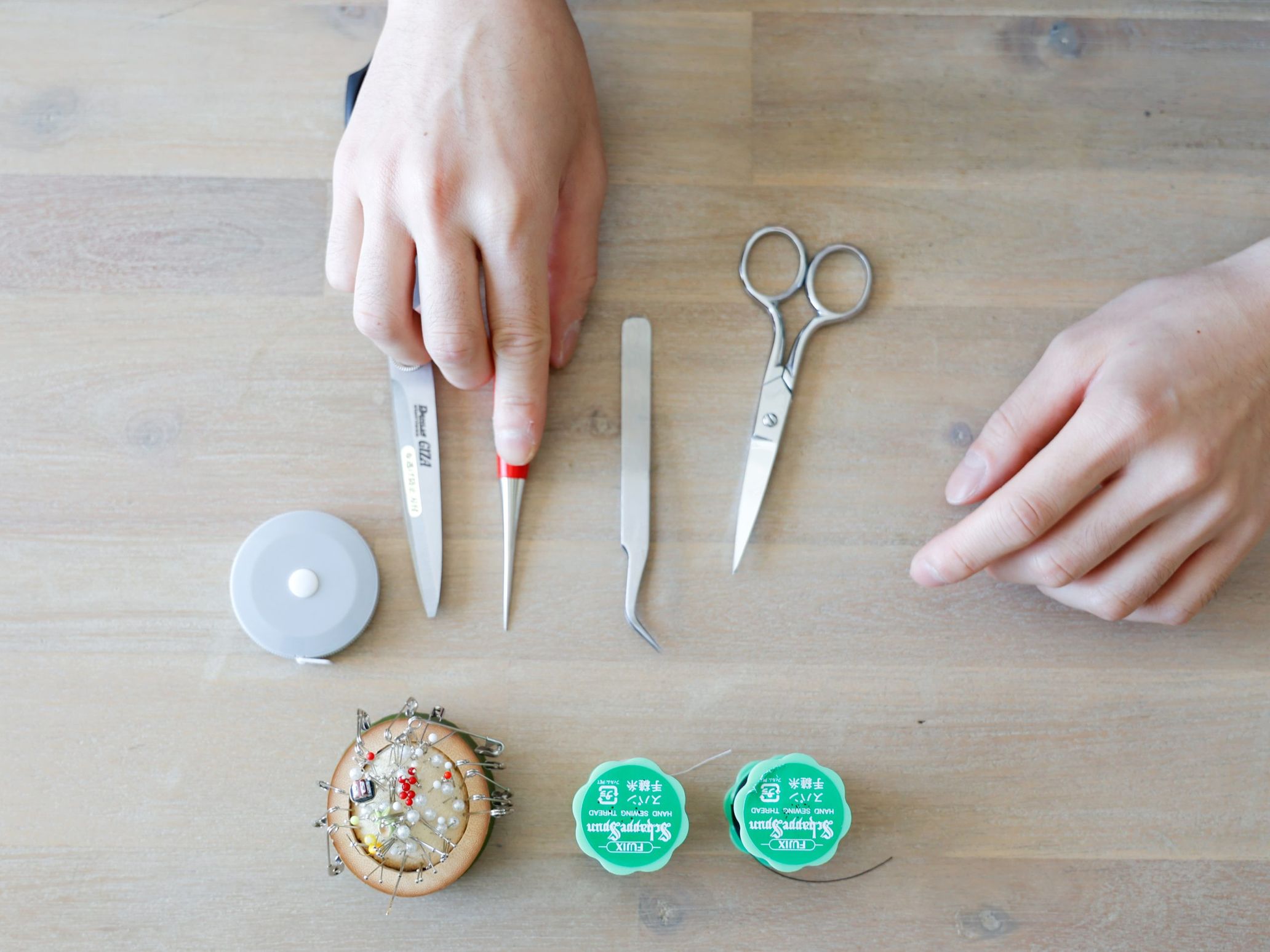
In search of a place where originality sleeps
——How do you want your brand to be like in the near future?
Tanaka: Ai Hashimoto-san wore my design on the Tokyo International Film Festival red carpet, and in an interview, she said, “I wanted to highlight a Japanese brand because it’s the Tokyo International Film Festival.” I’m sure many people wear brands from other countries in such situations, but when she said that, I discovered one reason she approached me out of the many brands out there. I want my brand to stand tall in spaces like that. I want to be able to make clothes for such events.
——Which moments bring you joy in terms of your brand?
Tanaka: It makes me happy when I can work with people I like or admire, like Ai Hashimoto-san and filmmaker Show Yanagisawa-san, and that experience leads to another opportunity.
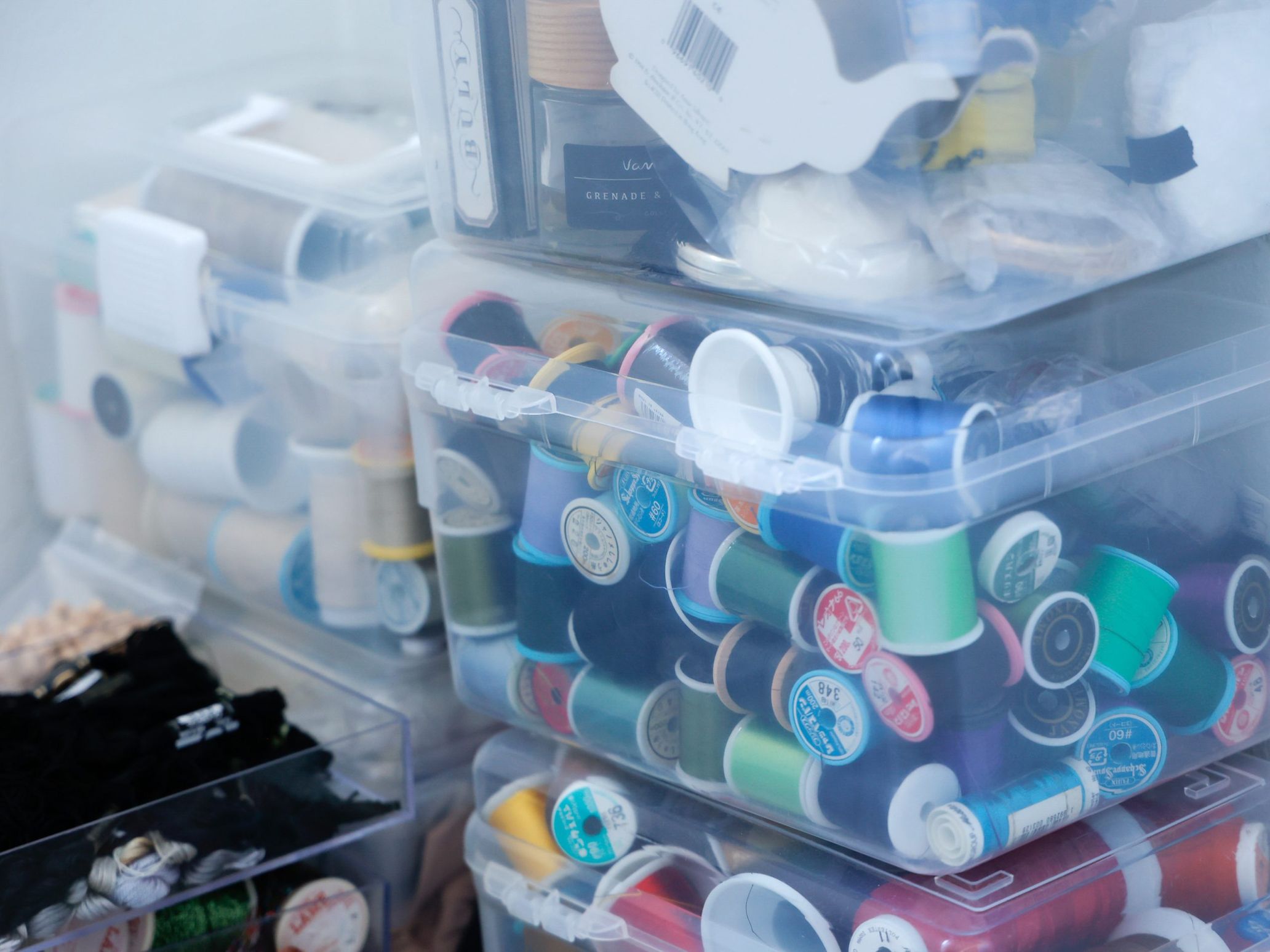
——Is there anyone you’d like to work with?
Tanaka: Yoko Maki-san recently wore my design at an event overseas. I want to work on something with her.
——I’m excited to see what kind of clothes you come up with. What do you keep in mind when designing clothes?
Tanaka: I love Asakusabashi and Nihonbashi. I go there frequently. Honestly, it’s not like the stores change what they sell every time I visit. The products don’t change, but the things I see do according to my mood, so I always walk around the same route.
——What’s the process behind designing collections like?
Tanaka: I do decide on the theme, but I can’t help but make something I want to make with my own hands first. I make whatever I want to make at that moment, like bead embroidery and lace items, and I create a theme simultaneously. I then search for where to apply that theme.
——In most cases, do you develop a concept as you make the clothes with your hands?
Tanaka: That happens a lot. I’d be lost unless I used my hands. Because there’s a limit to the thickness and size of beads and threads, I need to look for a shape that’d look the most beautiful when combined with fabrics. There’s no use if you only draw; using your hands is crucial.
——So, you make what you want to make at any given moment?
Tanaka: I always think about how far I can push myself. I don’t necessarily have to make easy-to-wear knitwear and things like that.
——Are you trying to challenge yourself differently?
Tanaka: If my brand were big, I’d be able to sell comfortable, high-quality clothes for cheap, but other brands do that already. With where I’m at right now, I want to polish my skills to make more decorative clothing.
——What you said right now could be helpful for us to discover our originality too.
Tanaka: It’d be an exaggeration to say my rival is Gucci, but I know there are some things I can do that Gucci can’t. As a small brand, there has to be something more hardcore I can work on that a big brand wouldn’t be able to. I want to work toward that.
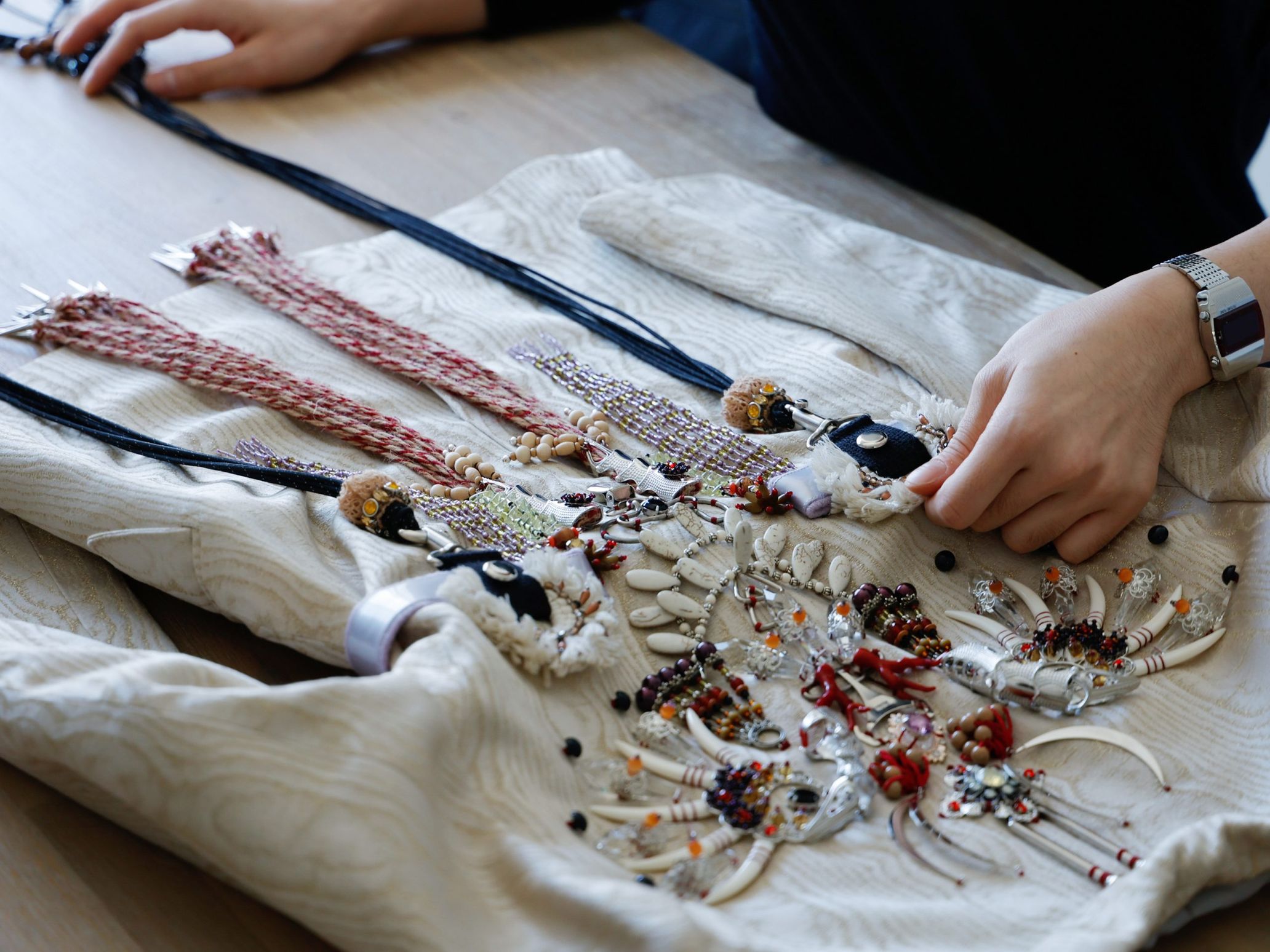
While there’s a demand for brands to have originality like no other, there’s also a demand for brands to make clothes that appeal to the people. Perhaps it’s the designer or brand’s duty to design such a contradiction.
Isn’t what Tanaka said at the end of this interview one tip on what we require to discover an original point of view? Submerge within yourself; it might look narrow and small at first glance, but that’s where the source of creativity that could echo throughout the world lies. Daisuke Tanaka still has more clothes he wants to make. His inquisitive spirit will never come to an end.
Photography Shinpo Kimura
Translation Lena Grace Suda

